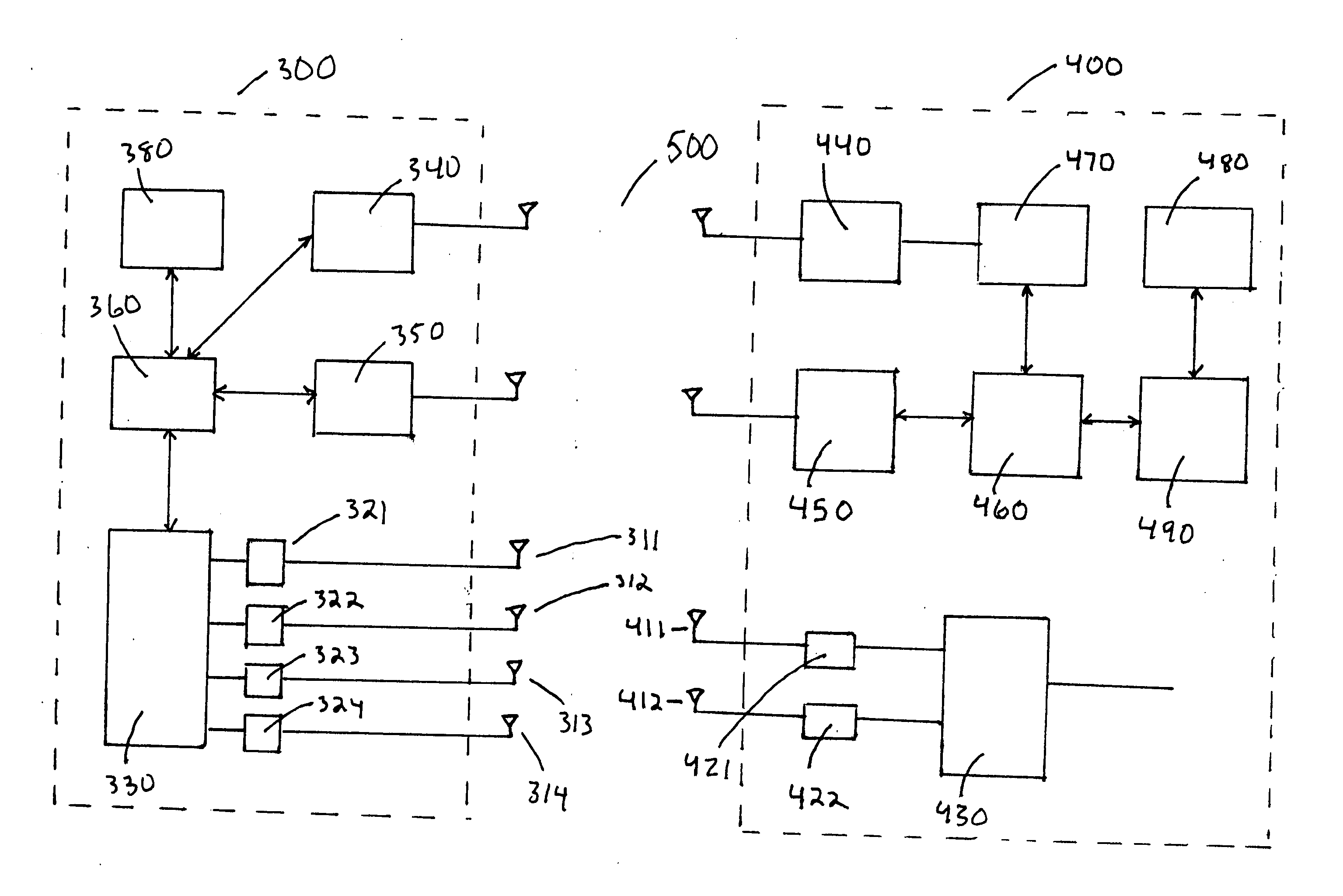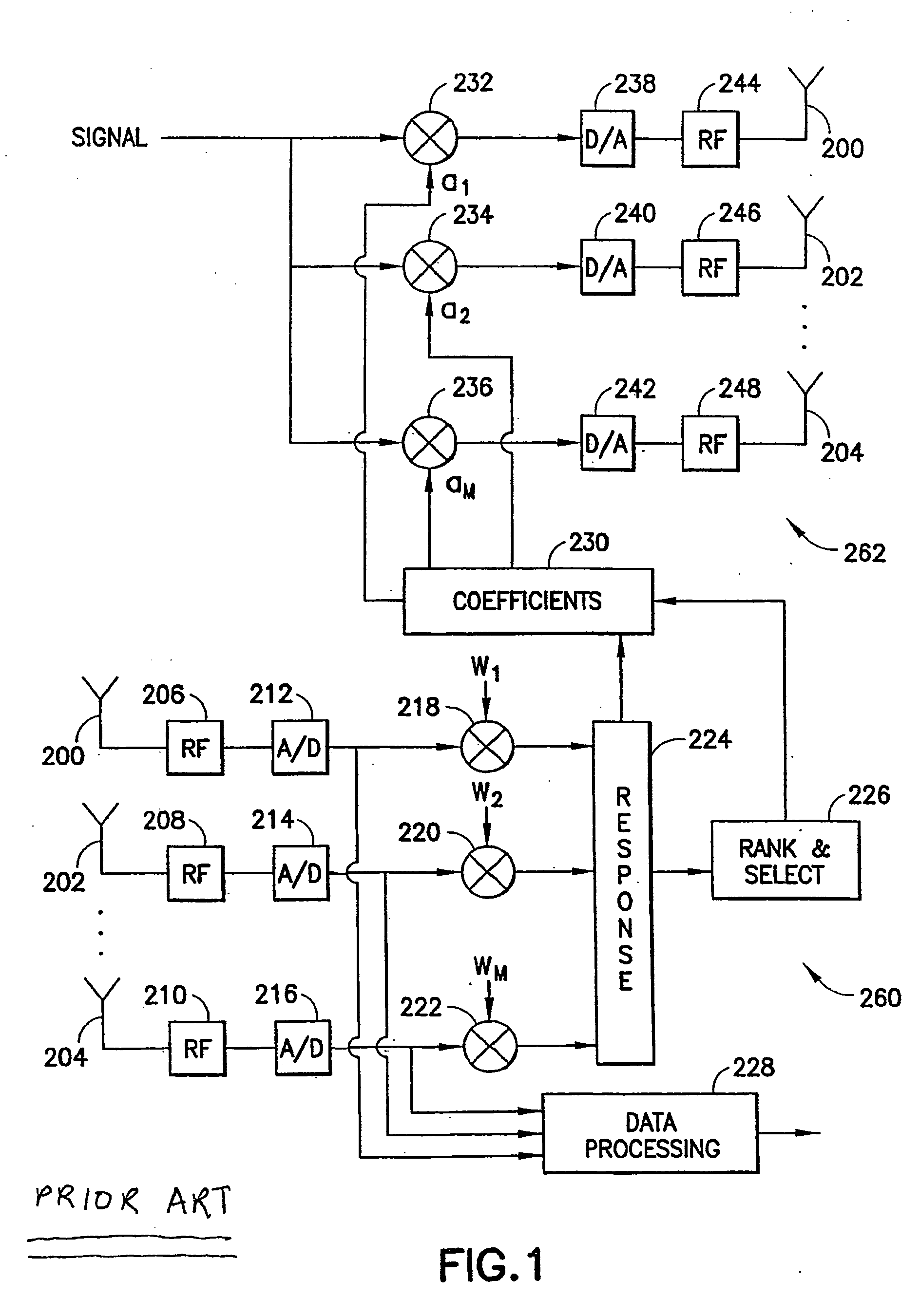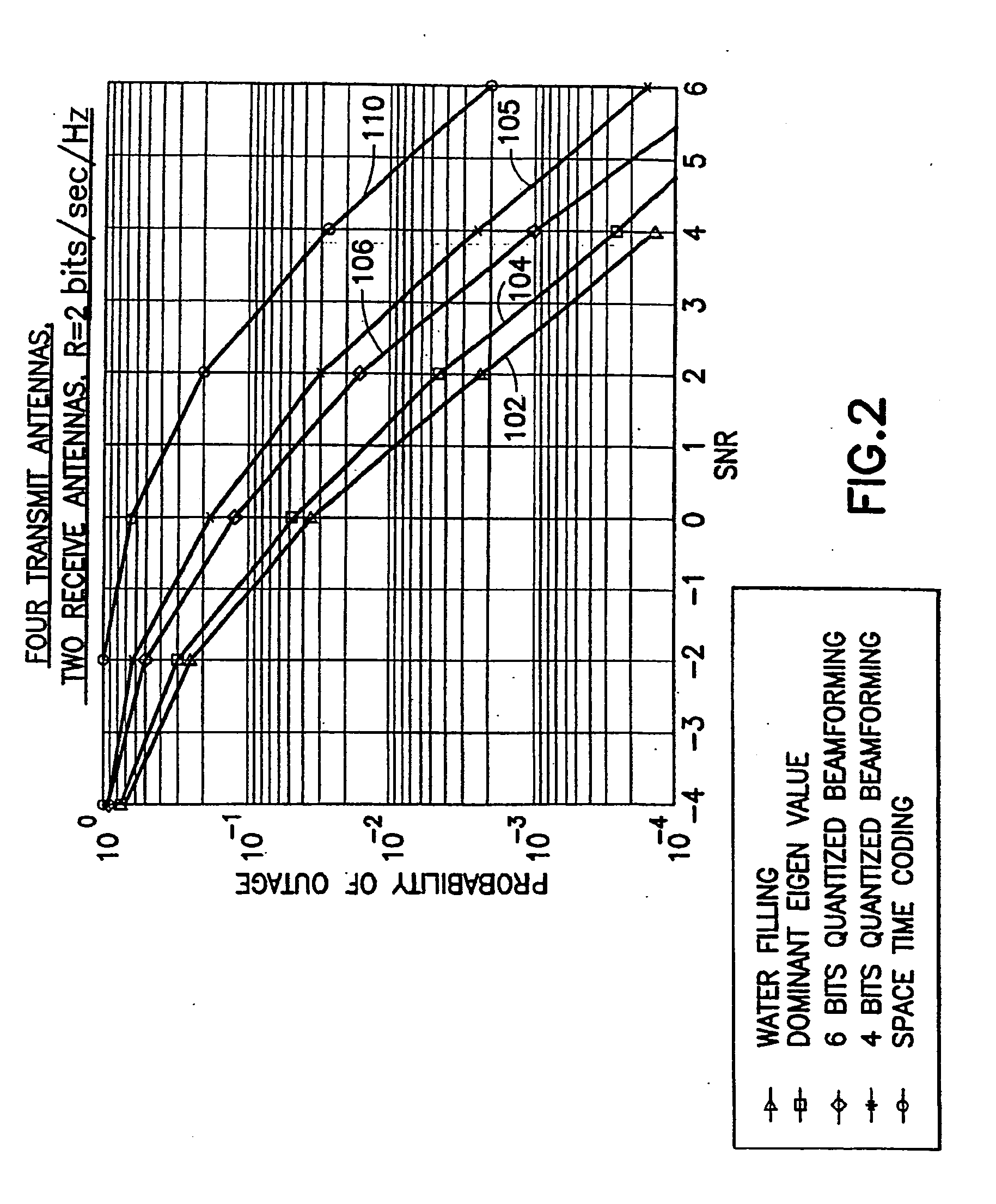Generalized m-rank beamformers for mimo systems using successive quantization
- Summary
- Abstract
- Description
- Claims
- Application Information
AI Technical Summary
Benefits of technology
Problems solved by technology
Method used
Image
Examples
Embodiment Construction
I. Preferred Beamforming Methods in Accordance with the Present Invention
[0026] The beamforming methods presented herein result in improved performance at provably lower computational complexity compared to the space time coding schemes currently proposed for multiple antenna systems. Low receiver complexity is an important design goal for downlink transmission where the handset (receiver) is constrained in its computational abilities.
[0027] It is well-known that channel state information at the transmitter can enhance system performance significantly. However, in practical systems, only partial channel information is available at the transmitter due to the limited nature of feedback resources. Hence, it is important to design feedback-based transmission schemes for situations where partial channel information is available at the transmitter. Transmission schemes for single receive antenna systems utilizing quantized channel information have been developed.
[0028] Presented herein ...
PUM
 Login to View More
Login to View More Abstract
Description
Claims
Application Information
 Login to View More
Login to View More - R&D
- Intellectual Property
- Life Sciences
- Materials
- Tech Scout
- Unparalleled Data Quality
- Higher Quality Content
- 60% Fewer Hallucinations
Browse by: Latest US Patents, China's latest patents, Technical Efficacy Thesaurus, Application Domain, Technology Topic, Popular Technical Reports.
© 2025 PatSnap. All rights reserved.Legal|Privacy policy|Modern Slavery Act Transparency Statement|Sitemap|About US| Contact US: help@patsnap.com



